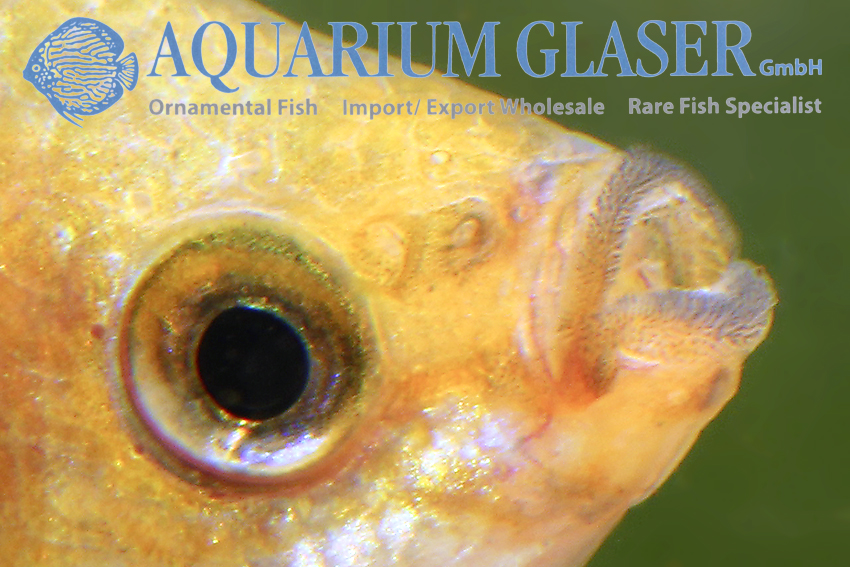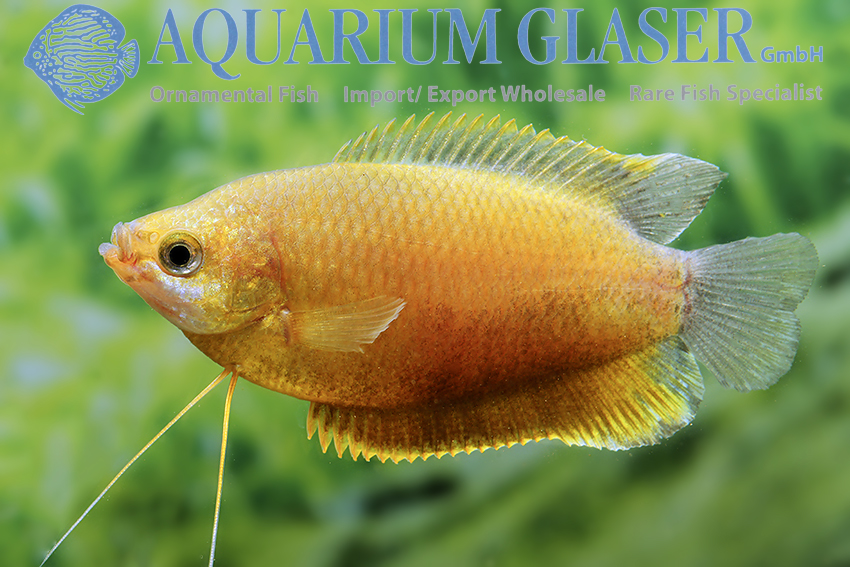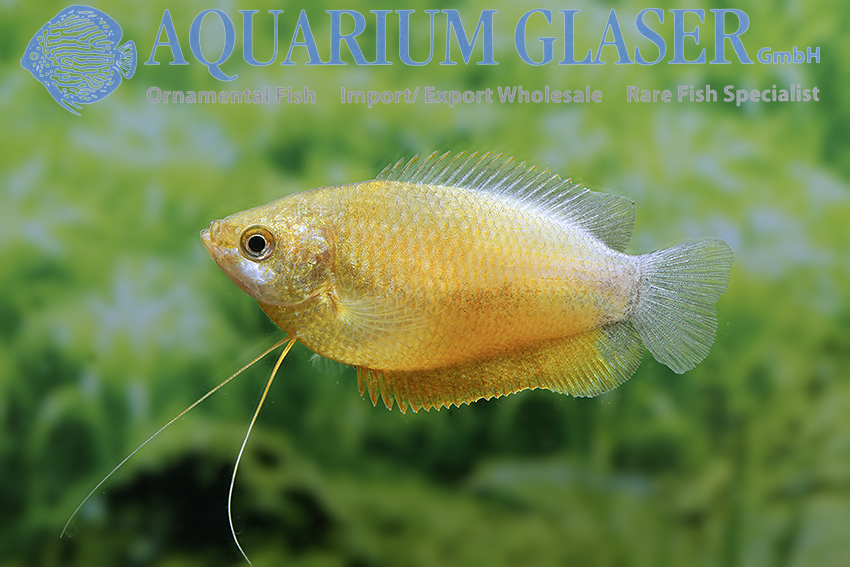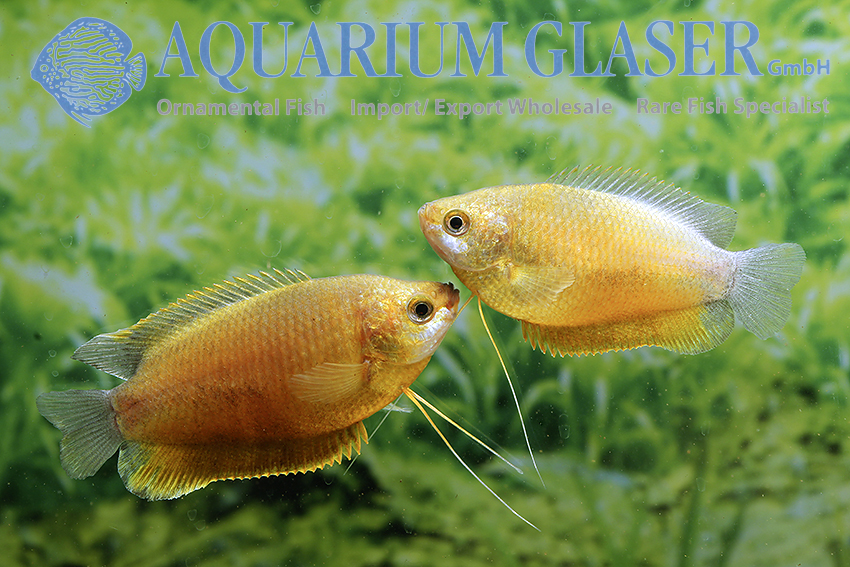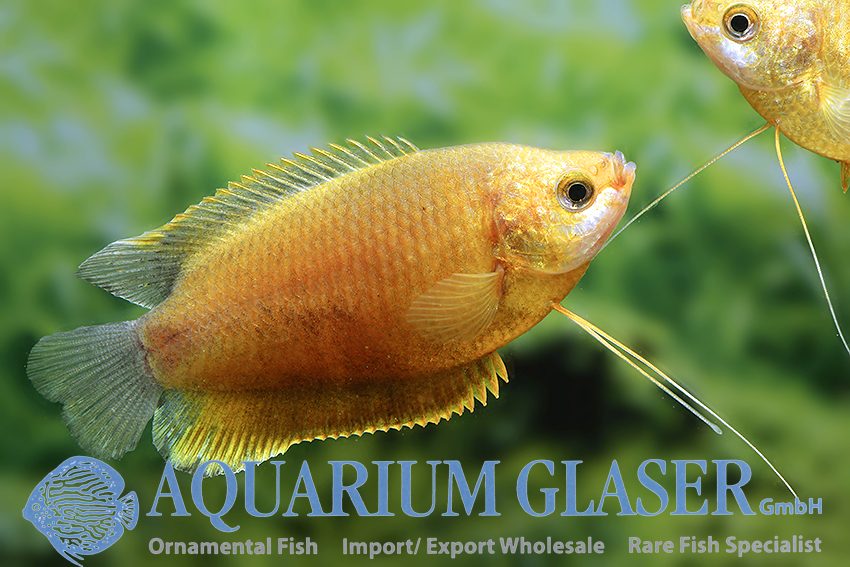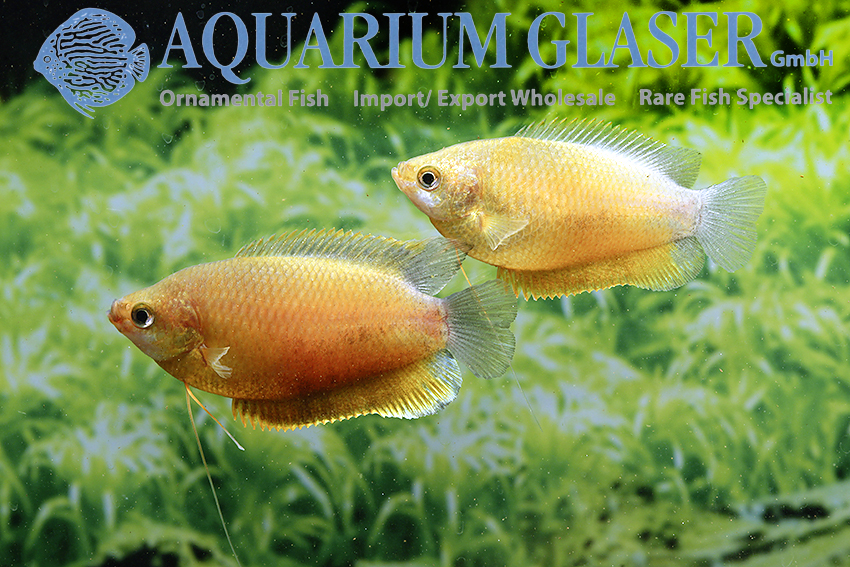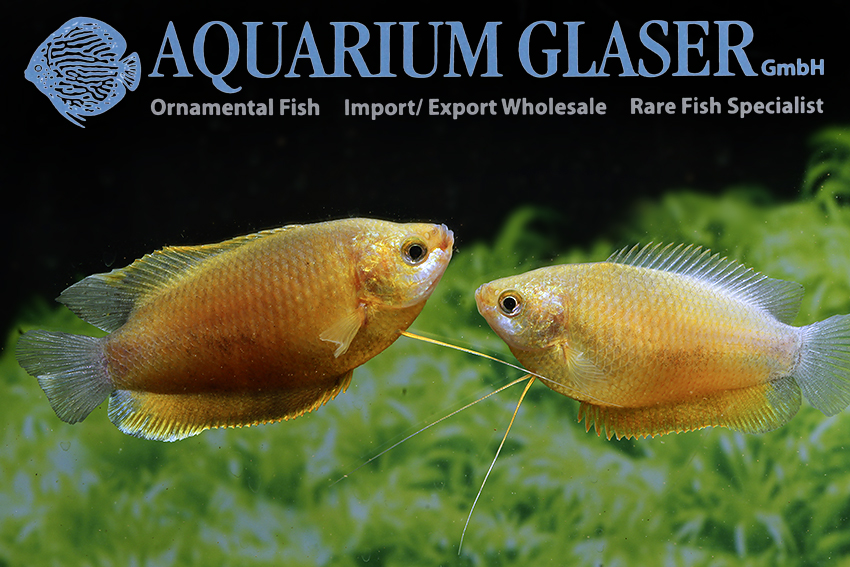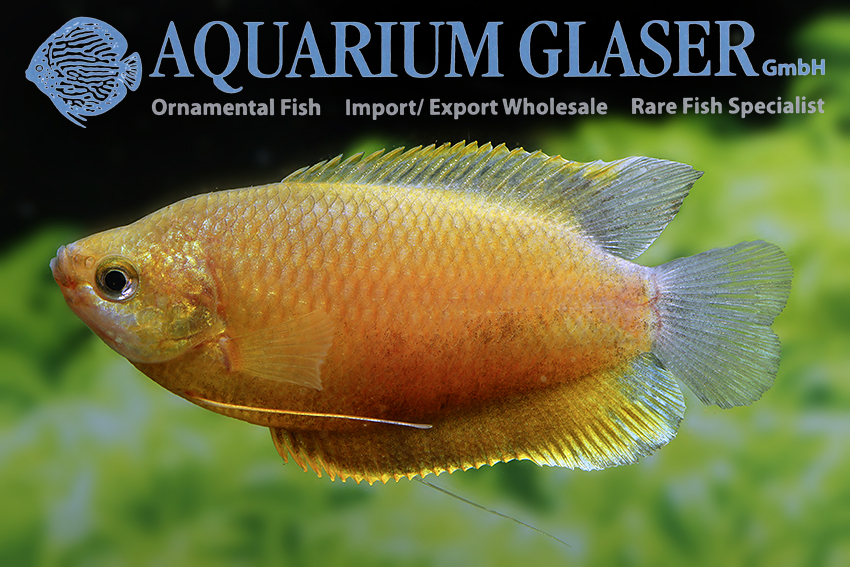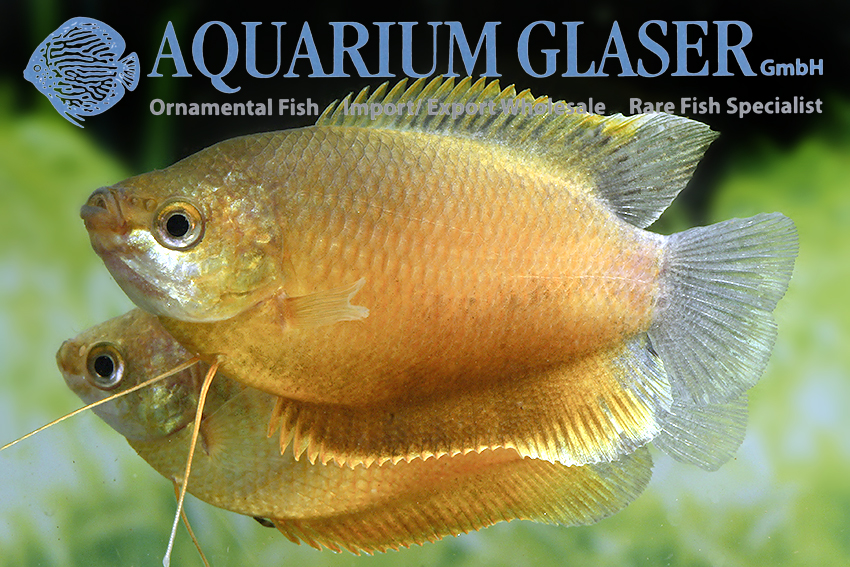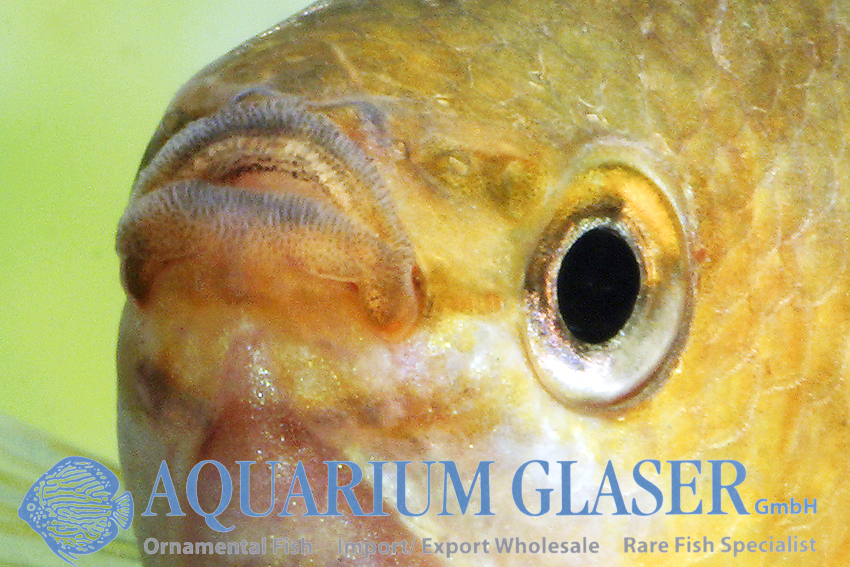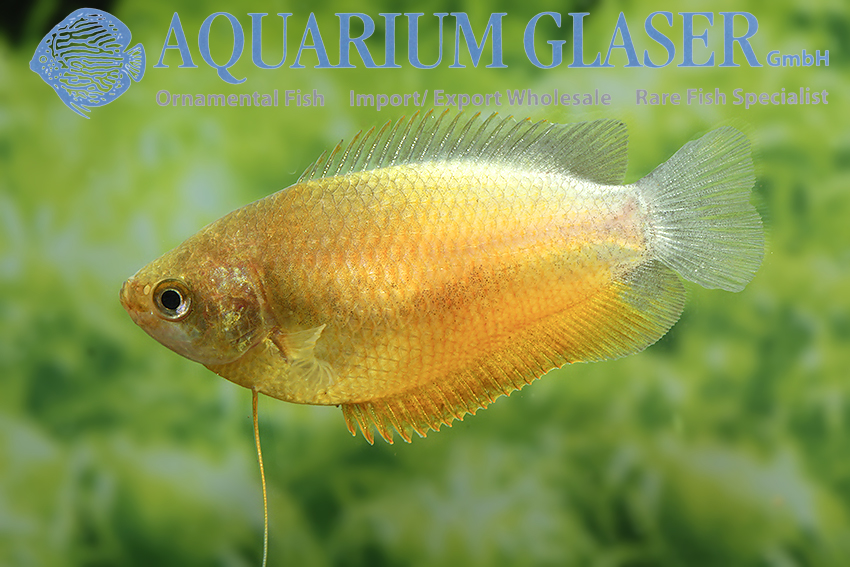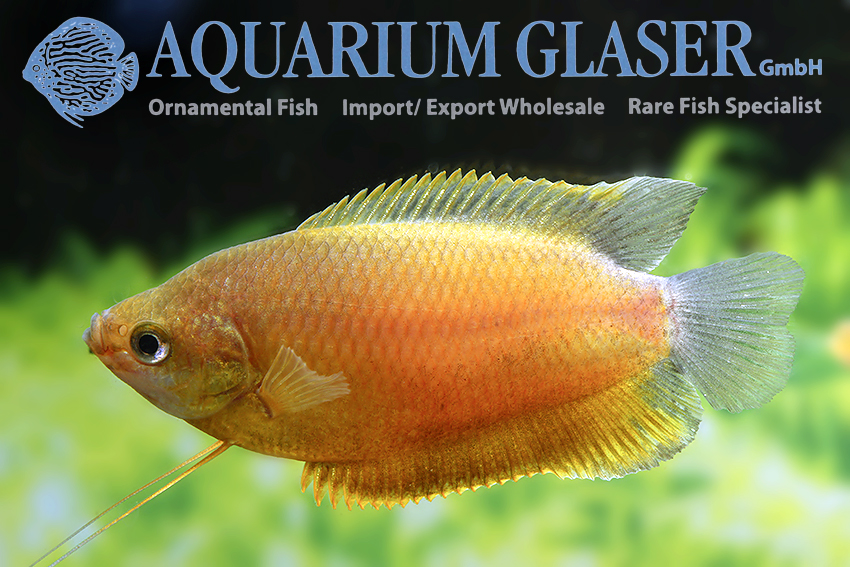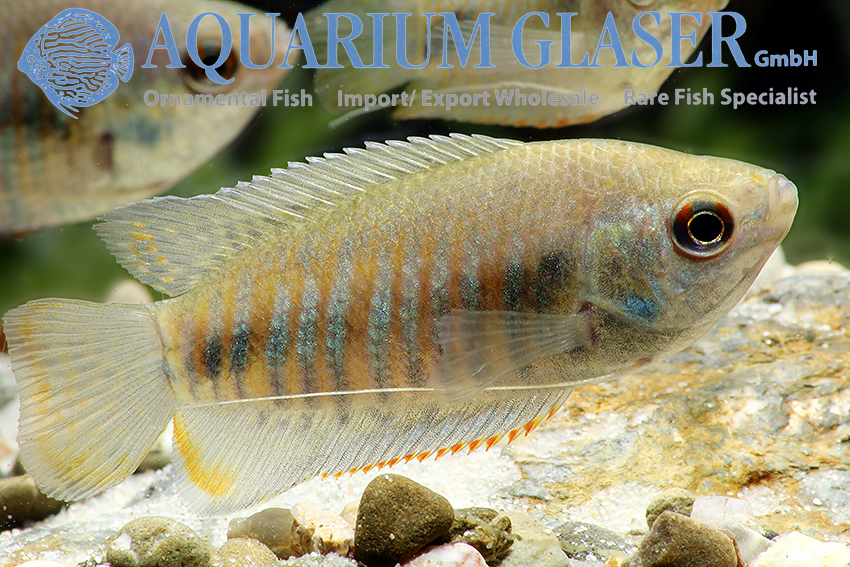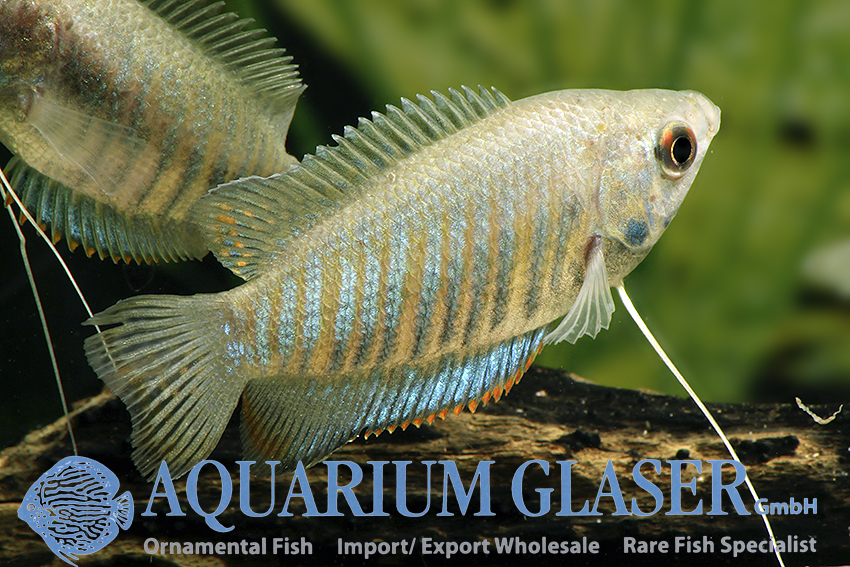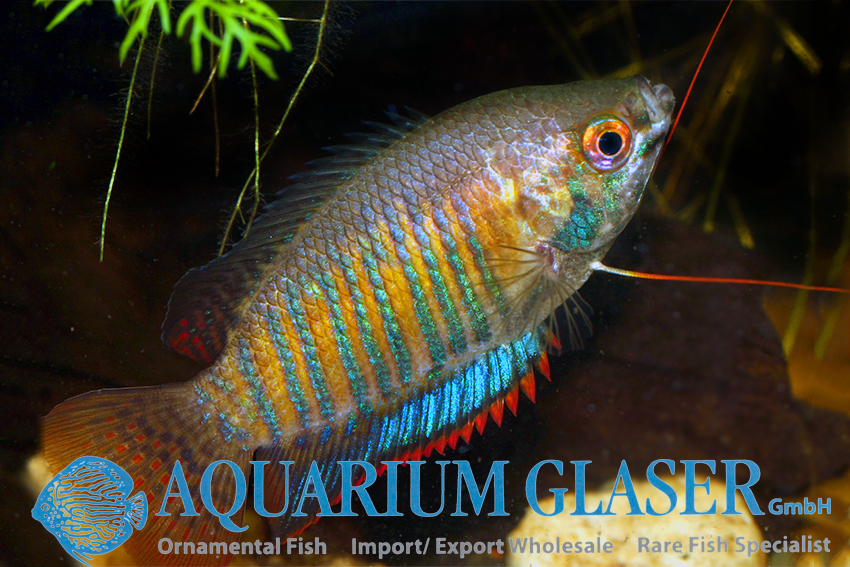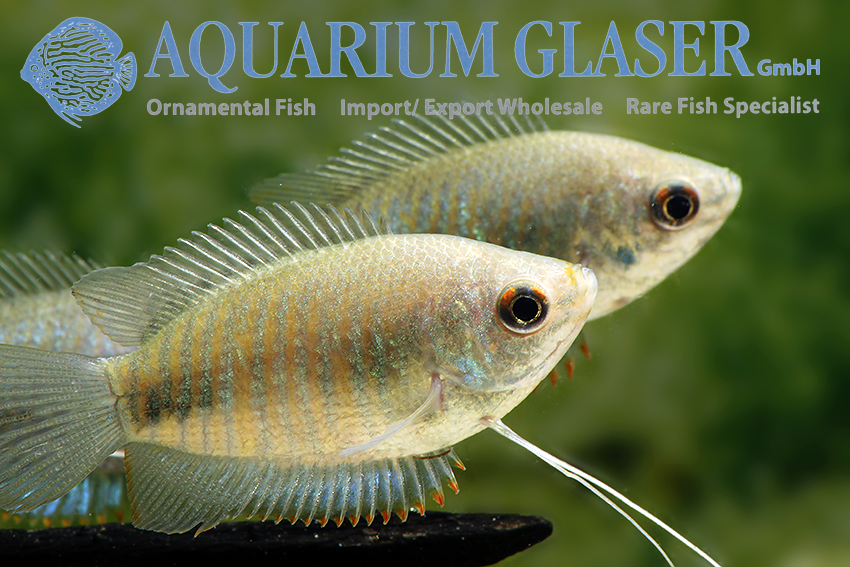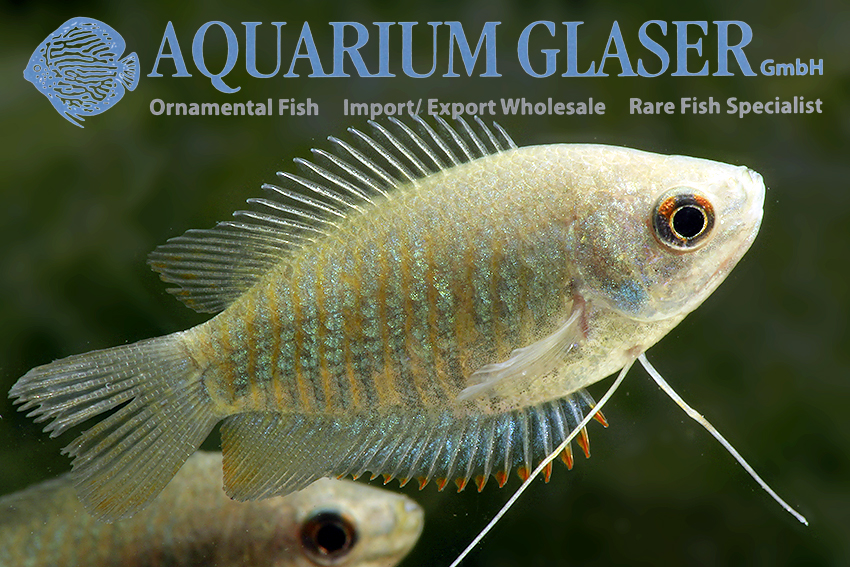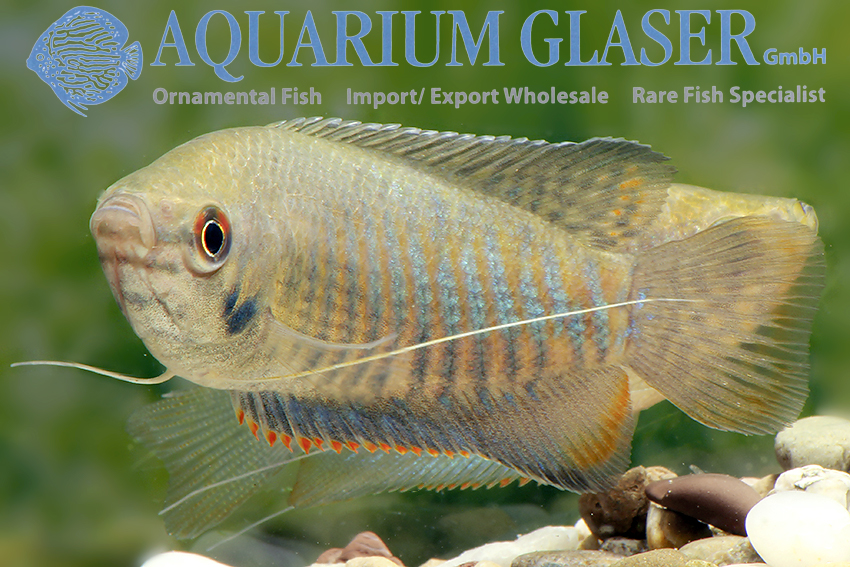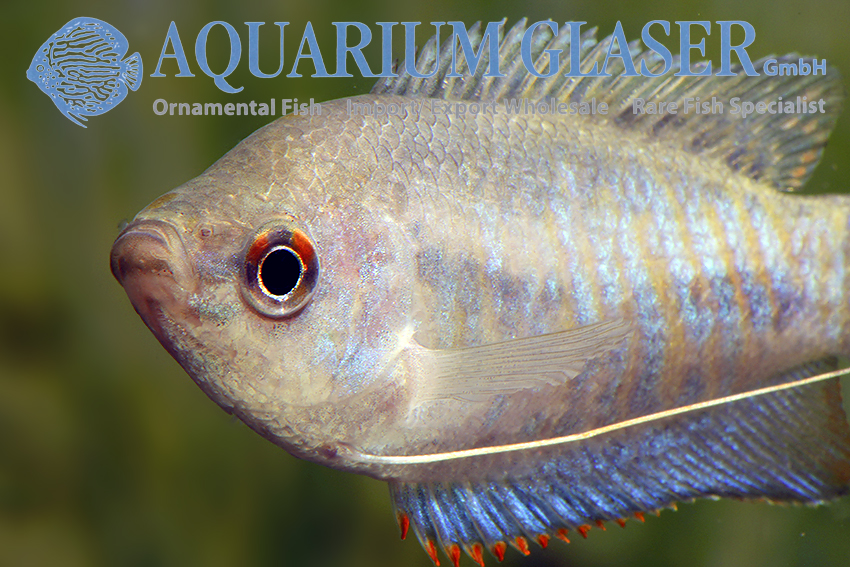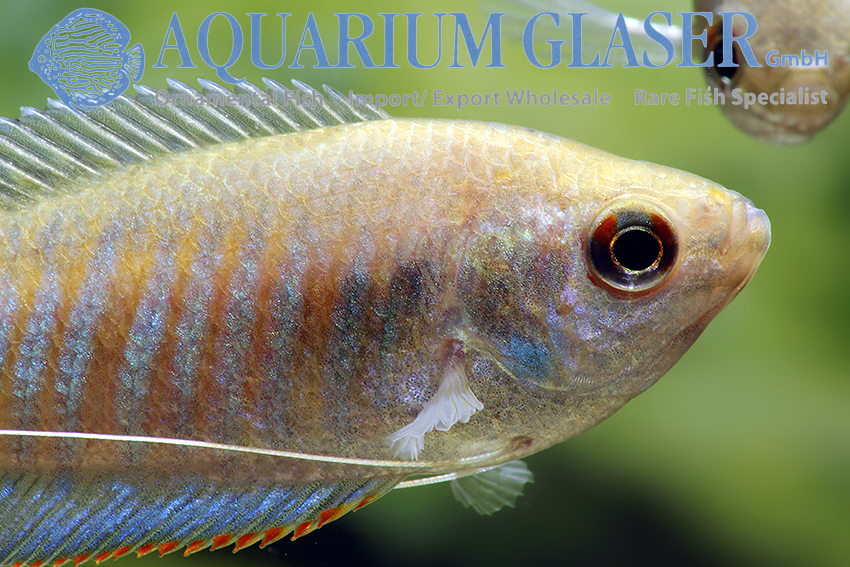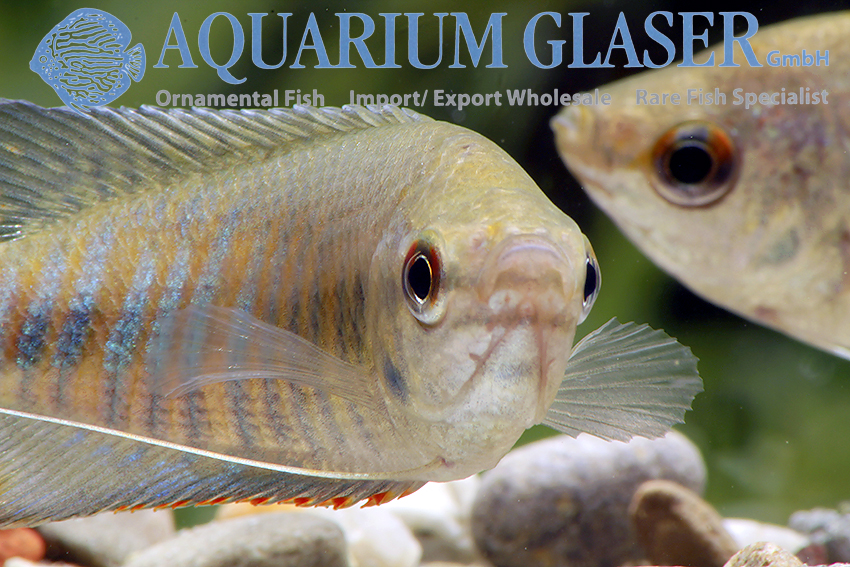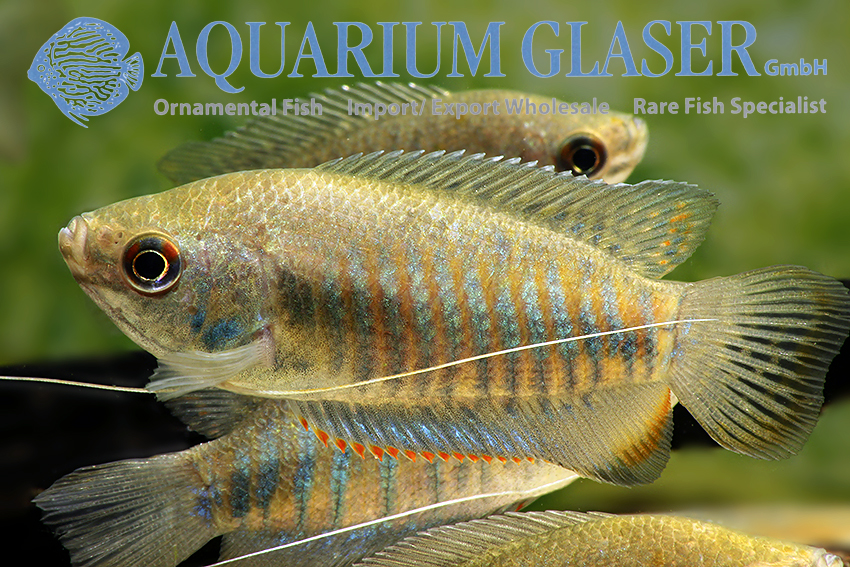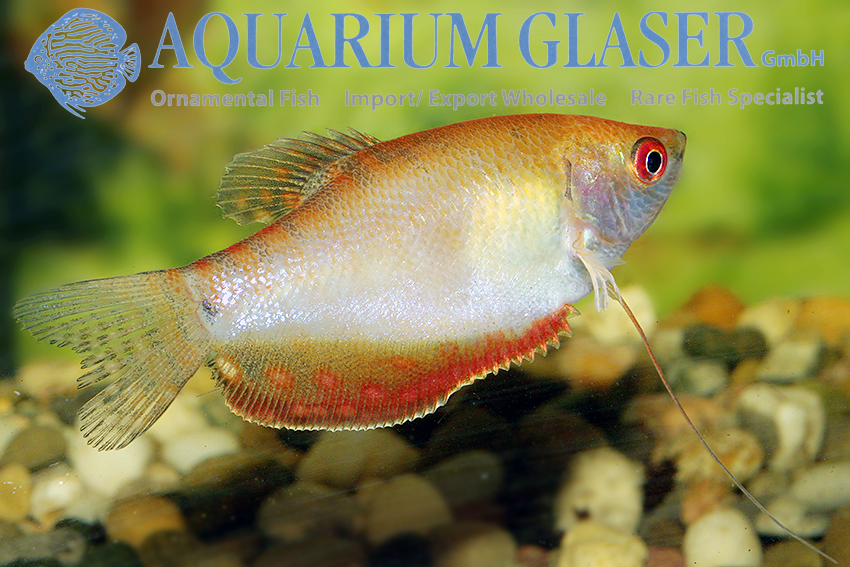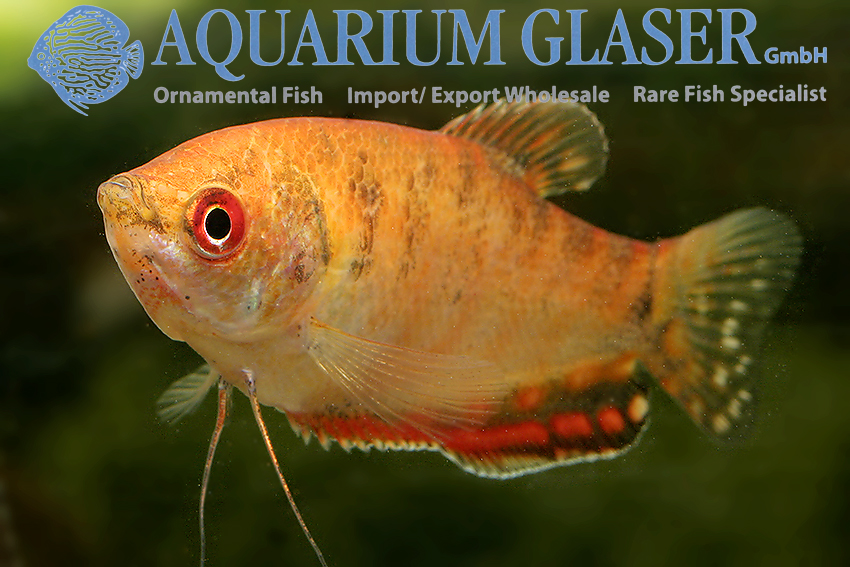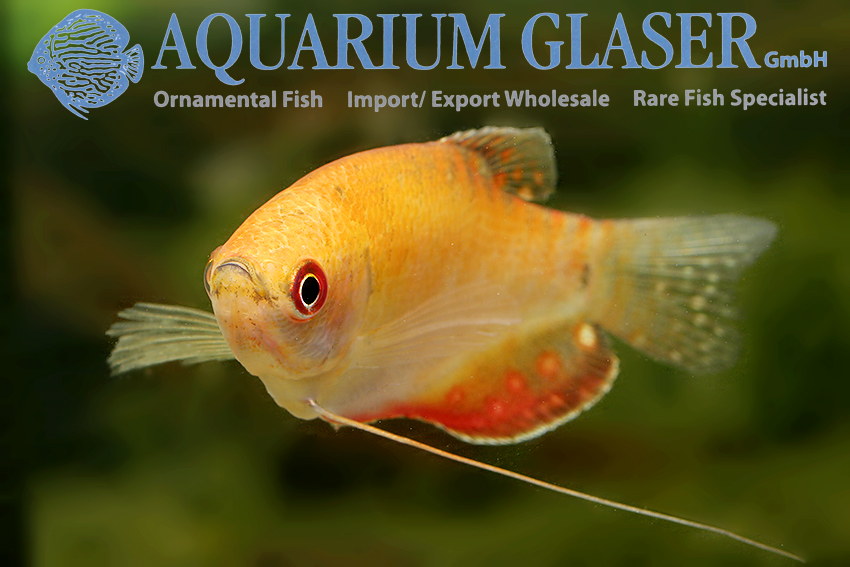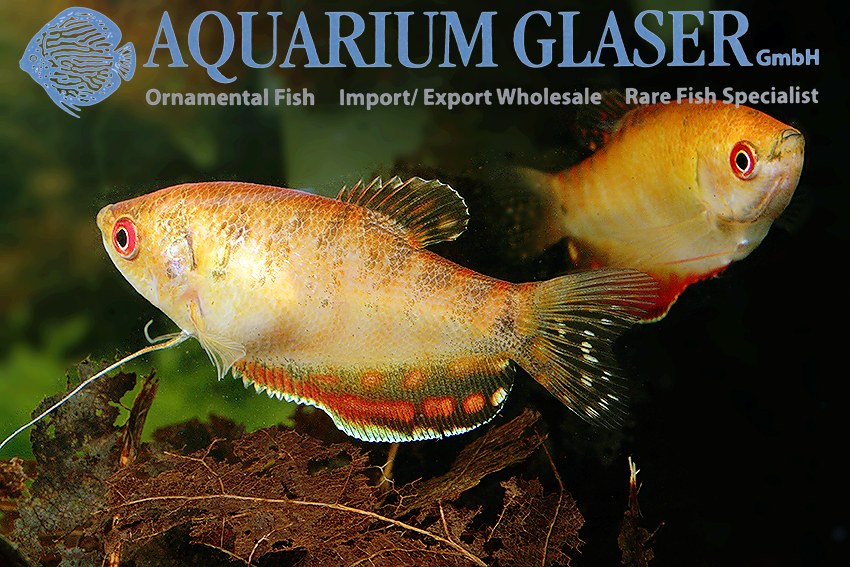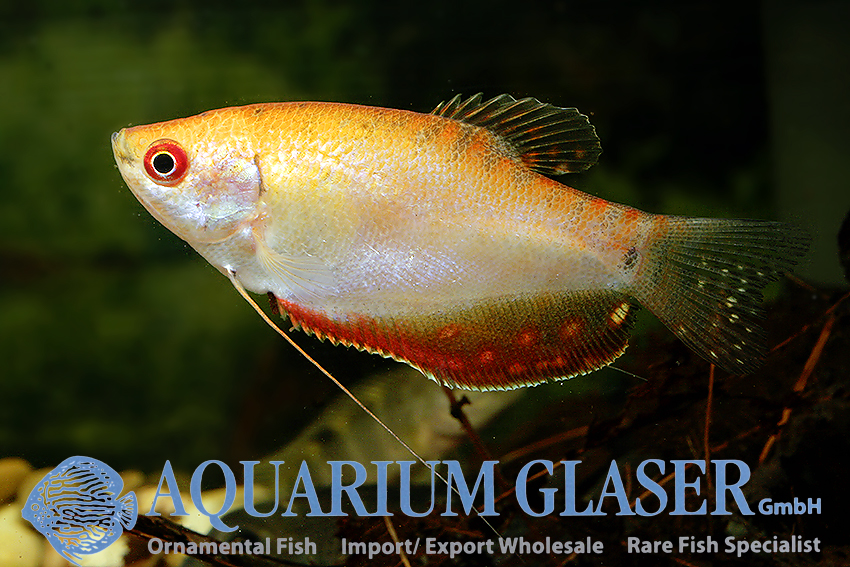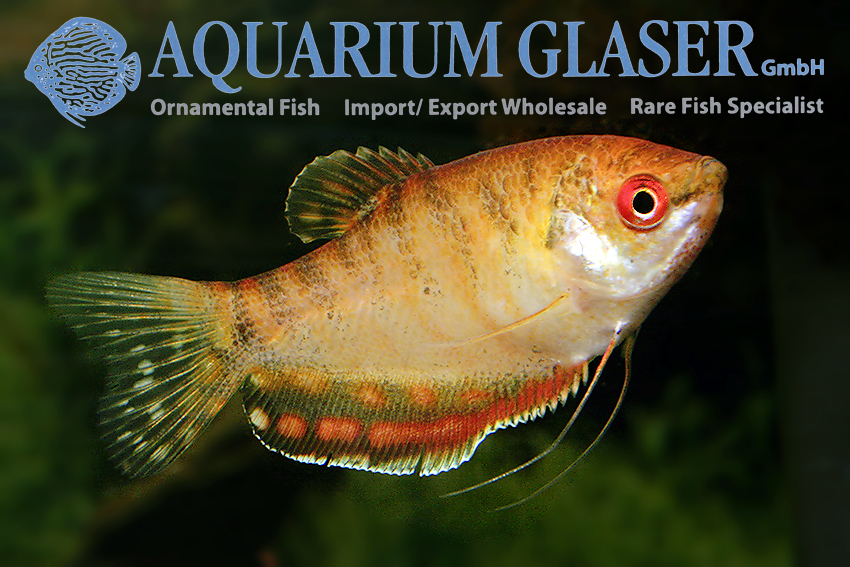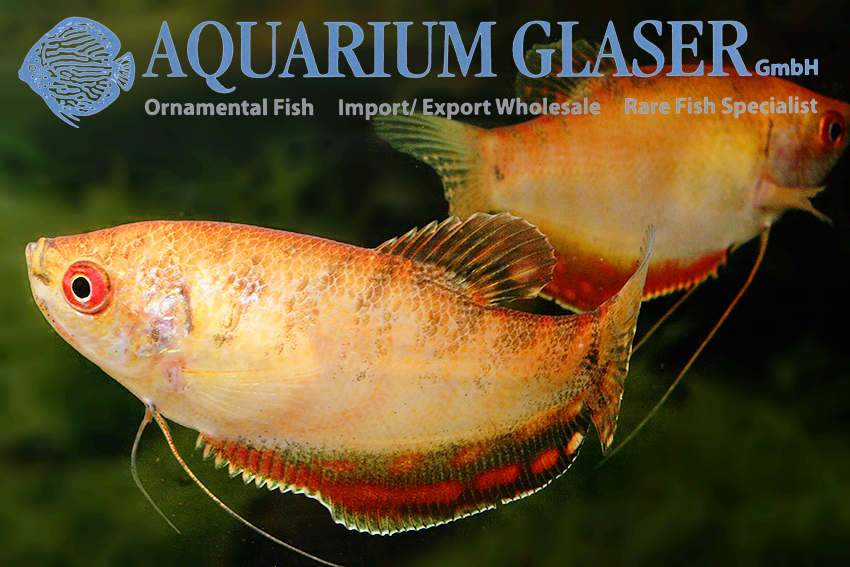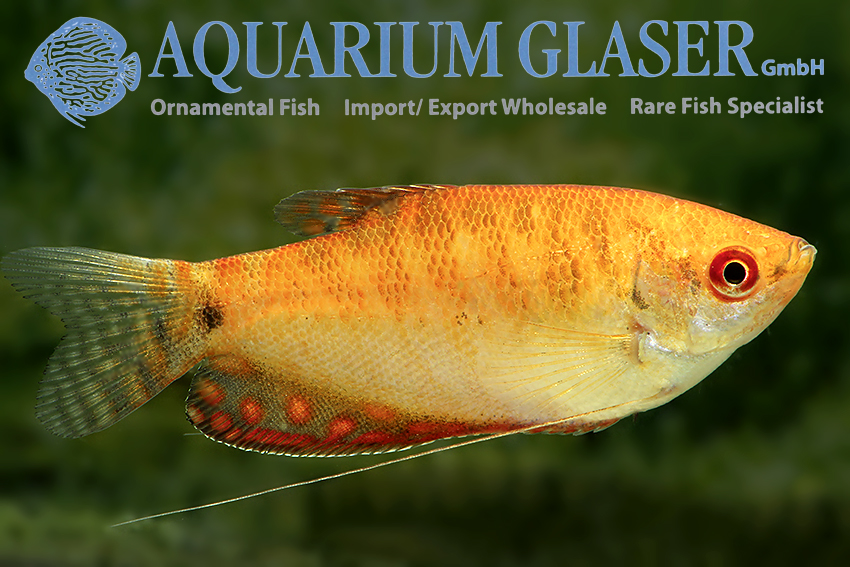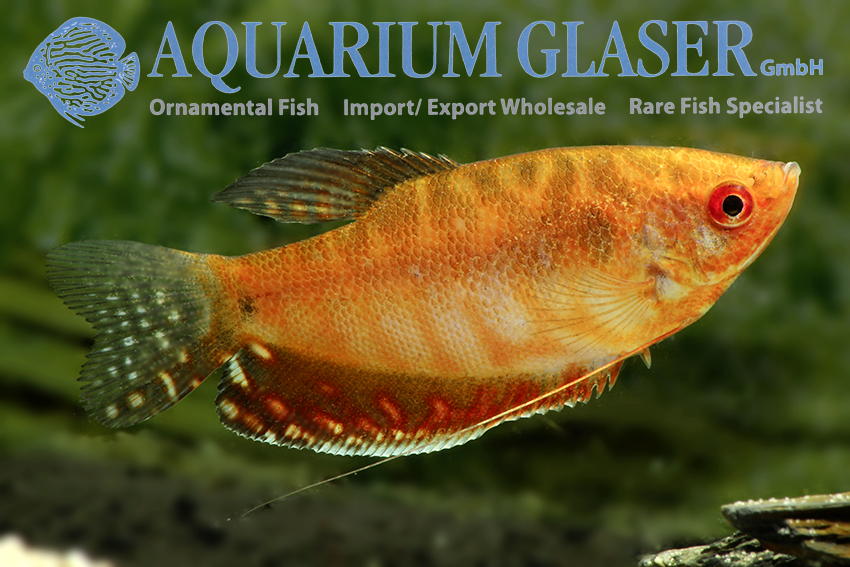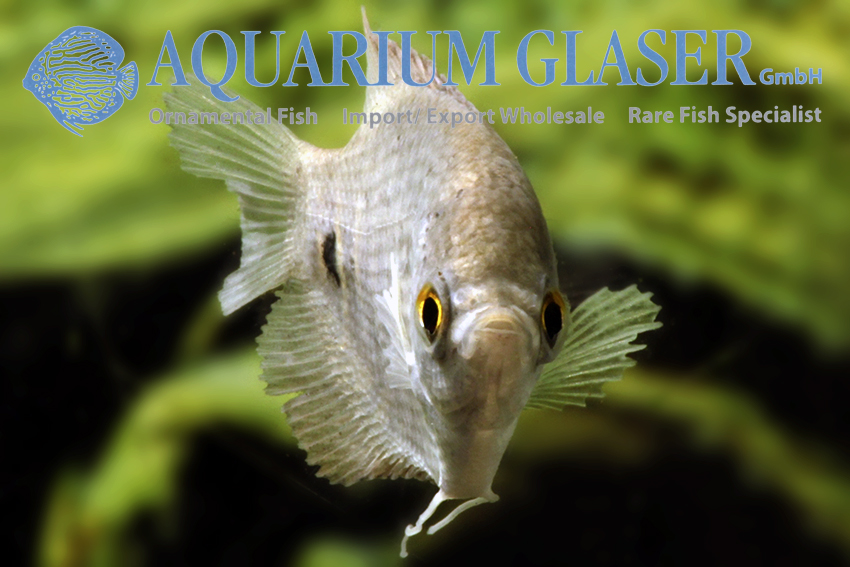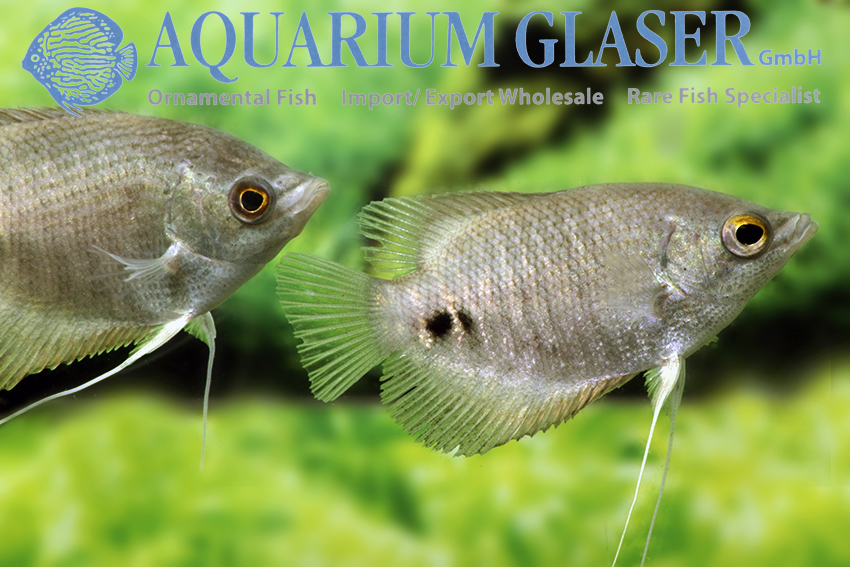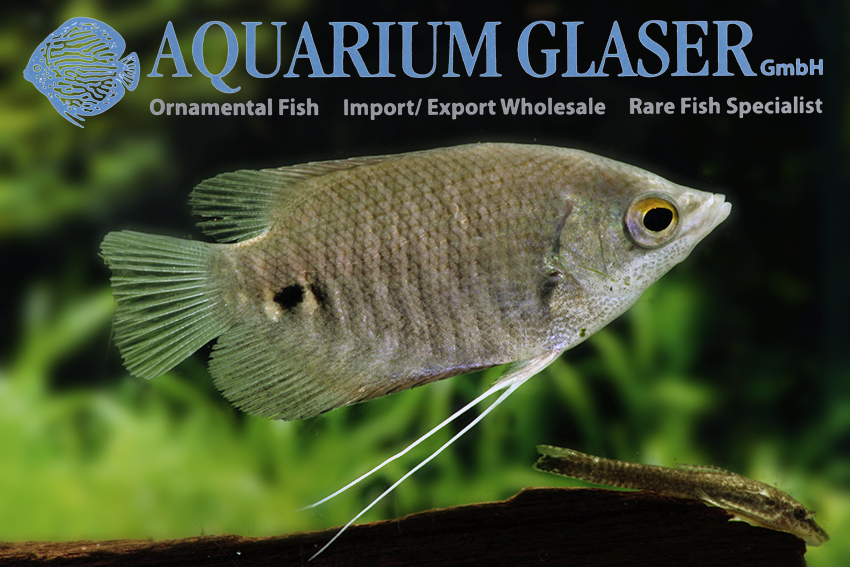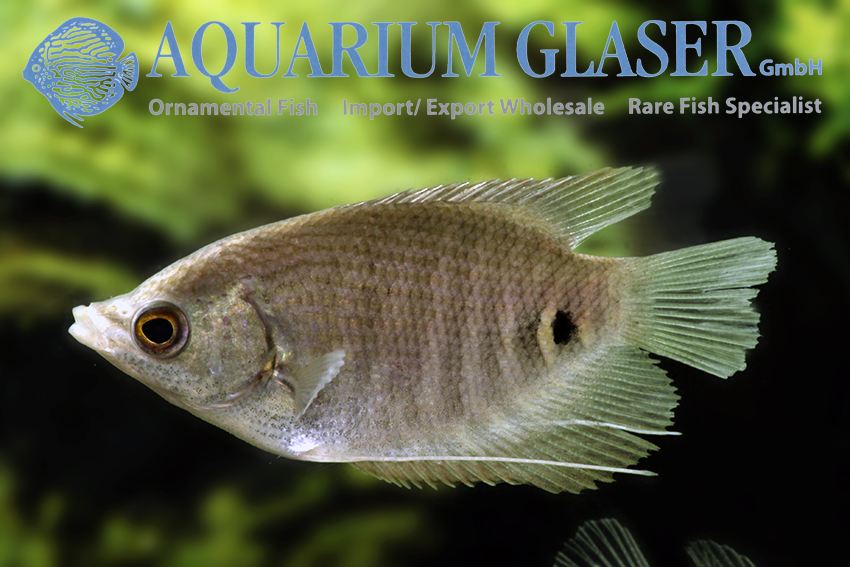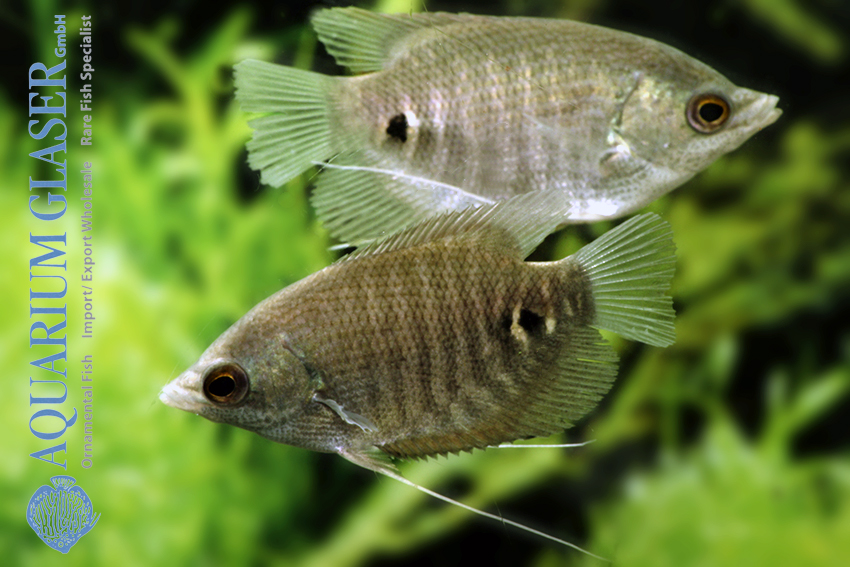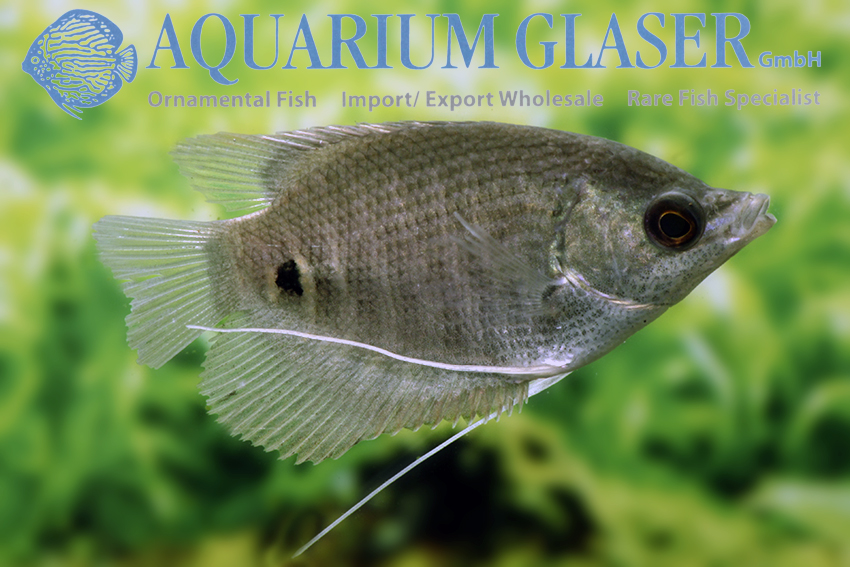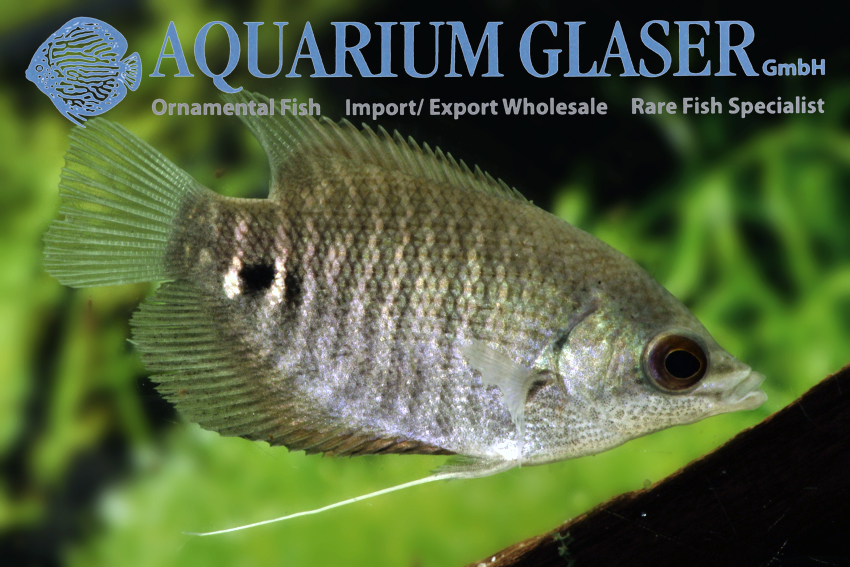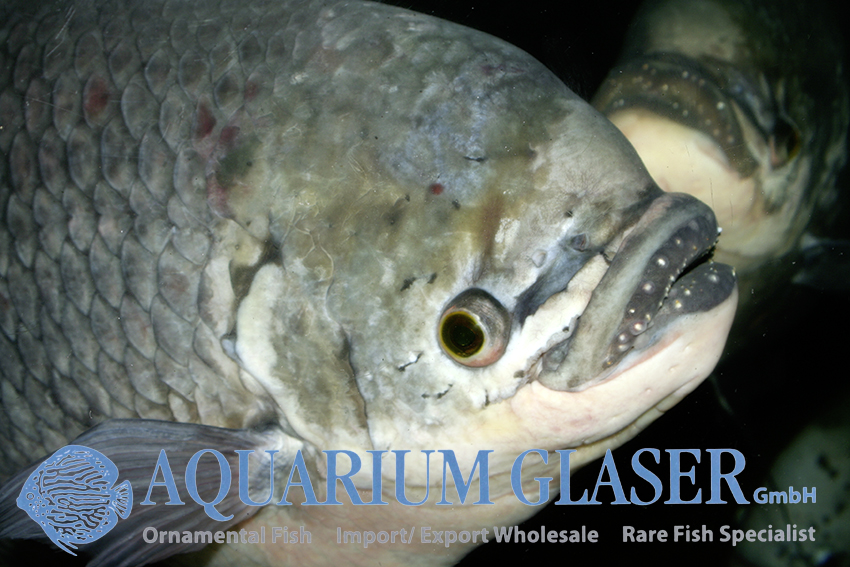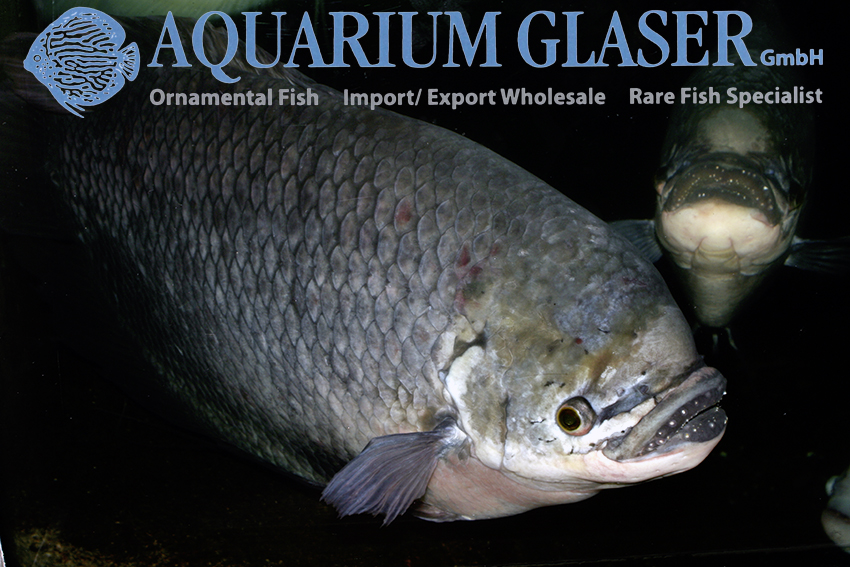The identity of Colisa labiosa, a gourami from Burma, is unclear; there is some evidence that the species so named in the hobby is actually not identical with C. labiosa in the sense of the first describer (Day, 1877), but it is much more likely that it is a scientifically not yet named species. But be that as it is: the “Aquarium Labiosa” is the ideal gourami for every well-kept and densely planted community aquarium: it is extremely colorful, calm, peaceful and not very susceptible to diseases.
From the “Aquarium-labiosa”, there is a stripless bred sport, with altogether the blue color portions are missing and which comes along therefore in a splendid yellow-orange. The sometimes used variety name “peach” is well chosen, because as with this fruit, the coloration is not evenly distributed over the whole body, but as with the wild form, different parts of the body have different intensity.
The males can be recognized by the pointedly extended dorsal fin (rounded at the end in the female). With approximately 6 cm of maximum-size, the „Aquarium-labiosa” of both color-forms (therefore wild type and orange) are fully grown. They are typical bubble nest builders with father-family, like all other gouramis of the genus also. In respect of feeding the animals are not very demanding, but you should consider that Colisa have a narrow throat and therefore cannot take up very large food chunks. They prefer to slurp finely grated dry food from the water surface.
Sexually mature males of the “Aquarium labiosa” have, just like the “real” Colisa labiosa, thickened lips – the species name “labiosa” means “lipped” and alludes to this anatomical peculiarity.
For our customers: the fish have code 411443 on our stocklist. Please note that we only supply the wholesale trade.
Text & photos: Frank Schäfer





